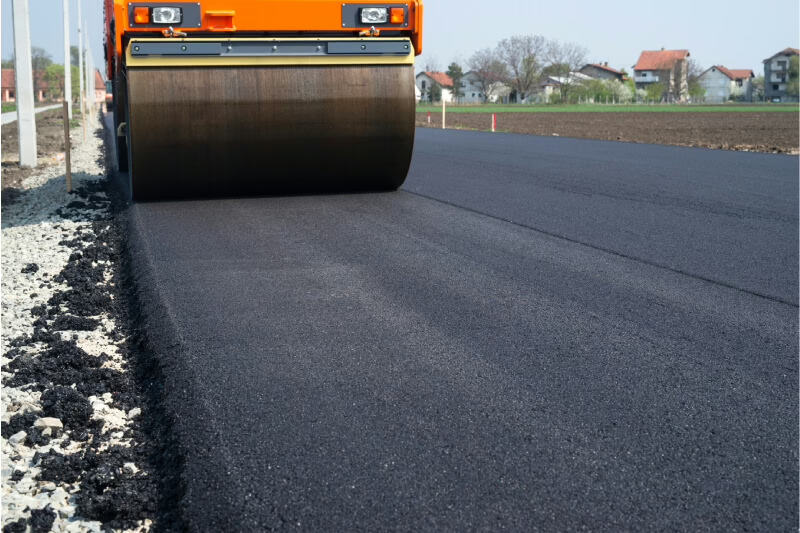Different Types of Road Construction Methods: A Simple Guide to Paving
Posted 25 Sep 2025
Road construction is a meticulous process of carefully selected materials and methods that ensure durability, safety and efficiency. With various paving options and construction techniques available, it’s essential to understand the best choices for long-lasting, low-maintenance roads. Here we explore the different types of road paving, construction methods and critical design considerations for road construction and other paved areas.
Purpose and requirements of road paving
The different structural layers of the pavement each have an essential function in road construction:
- Load Distribution: To help the integrity of the road surface remain intact, the structural layers ensure the load of traffic is distributed evenly across the subgrade.
- Smooth Surface: Everyone prefers the comfort of driving on a smooth surface, which also helps to reduce the wear and tear on vehicles for a safer driving experience.
- Skid Resistance: When wet weather conditions strike it’s important that roads offer adequate friction to prevent skidding.
- Environmental Resistance: With everchanging weather and climate road design needs to withstand changes in temperature and moisture, ensuring long-term durability.
- Durability and Longevity: A quality pavement takes time and money to construct so it’s resilience to heavy traffic and weather conditions is paramount to avoid the inconvenience and cost of repairs.
- Drainage: Effective water management is the best way to prevent water damage and freeze/thaw cycles that are prone to compromising the integrity of the pavement structure.
Careful selection of appropriate materials and methods is the best way to create durable paved roads that perform well for many years.
Key components of a road pavement
There are several layers to a typical road structure:
- Subgrade: The natural soil that supports the road.
- Subbase: Relatively inexpensive aggregate materials ae usually used for this layer which helps to provide structural support and improve drainage.
- Base Course: Probably the most critical layer for distributing traffic loads and adding strength.
- Surface Course: The top layer focusing on smoothness, durability, and skid resistance.
Together, these layers serve a specific role in enhancing and maintaining the performance and longevity of the paving.
The different types of road paving
- Flexible Paving: Made of asphalt concrete or modular paviour units, flexible paving is commonly used for roads and car parks and is accommodating of some settlement and ground movement without failing to the extent of needing repairs.
- Rigid Paving: This uses a reinforced concrete so that it can better cope with heavier vehicles and damaging turning movements.
- Composite Paving: This is made of a combination of flexible and rigid layers and offers the advantages of both flexible and rigid paving, often with an asphalt overlay on a concrete base.
Construction methods for flexible paving
Flexible Paving (with Asphalt Concrete)
- Materials: A selected aggregate subbase with layers of asphalt concrete in line with the appropriate standards.
- Construction: First the subgrade is prepared then the asphalt mix, paving and compacting each layer to ensure strength and density.
Construction methods for rigid paving
Rigid Paving (with Reinforced Concrete)
- Materials: Made from cement, aggregates, and reinforcement like steel bars.
- Construction: Involves subgrade preparation, concrete placement, jointing for thermal expansion, and curing to ensure durability.
Pavement design considerations
Setting out to design a road paving structure you’ll need to consider several factors:
- Traffic Load: This means thinking about the volume of traffic it will have to take as well as the axle load to help determine the appropriate thickness of the road surface.
- Climate: Changes in temperature and moisture levels impact the performance of paving materials, which can impact their durability for the long-term.
- Soil Conditions: Different soils have varying bearing capacities which need to be understood to ensure a successful road construction project.
- Drainage: A robust drainage solution is essential to avoid water accumulating on the road, which could compromise the paving structure performance over time.
Road construction methods and quality control
These are the four main steps of the road construction process:
- Site Preparation: This involves clearing and grading the land into a stable subgrade.
- Foundation Layer: This is the subbase where the thickness is determined by the bearing capacity of the subgrade soils.
- Installing Kerbs: Or another type of edge restraint.
- Paving and Compaction: Once the paving material is laid down it requires proper compaction to ensure uniform density across all layers.
Throughout the process there is quality control testing to check that materials meet stability and durability standards, such as tests for soil compaction, asphalt mix stability and aggregate gradation.
Maintenance and longevity
Regular maintenance is the best way to extend the lifespan of paved roads. It’s not unusual for flexible paving to require crack sealing and overlays, while rigid paving’s may need joint sealing and repair. There are various rehabilitation methods to restore a paved road’s structural integrity, like milling and slab replacement.
Conclusion
There is a lot more than meets the eye when it comes to paving types and construction methods, and understanding all aspects is essential for creating safe, durable roads and paved areas. By factoring in elements like traffic load, climate, and soil conditions, professionals can ensure that paving is designed to suit the demands of modern infrastructure. Road construction technologies are evolving all the time, particularly in using more sustainable materials and geosynthetic materials, keeping roads reliable for years to come.




